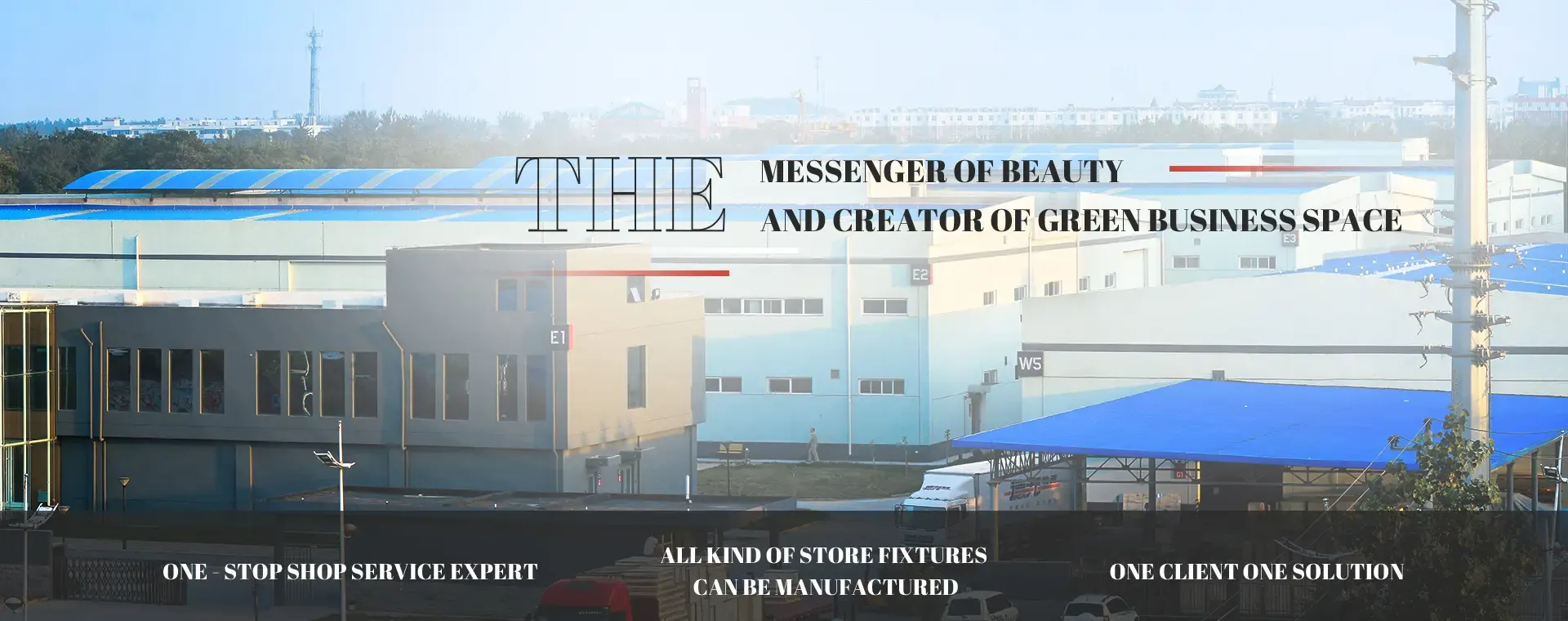Sep . 29, 2024 20:04 Back to list
Leveraging Store Fixtures for Enhanced Retail Experiences and Increased Sales Opportunities
Understanding Store Fixtures A Key Element in Retail Design
In the world of retail, the success of a store is not solely determined by the quality of its products or the effectiveness of its marketing strategies. One crucial yet often overlooked component that significantly impacts customer experience and sales is store fixtures. These are the physical structures used to display merchandise and organize the retail environment, and they play a fundamental role in enhancing brand visibility and promoting consumer engagement.
What Are Store Fixtures?
Store fixtures encompass a wide array of items designed to hold and display products in retail spaces. They include shelves, racks, displays, cabinets, counters, and more specialized fixtures like end caps or gondolas. Each type serves a functional purpose while also contributing to the overall aesthetic of the store. In essence, they are tools that help retailers present their offerings in a way that is visually appealing and convenient for customers to navigate.
The Importance of Store Fixtures
1. Enhancing Product Presentation The primary function of store fixtures is to showcase products effectively. Well-designed fixtures can highlight specific items, encouraging consumers to explore and engage with the merchandise. For instance, a beautifully arranged display can draw attention to new arrivals or seasonal products, making them more likely to catch customers’ eyes.
2. Creating a Shopping Experience Store fixtures significantly contribute to the overall shopping environment. They help define the layout of the store, guiding customers through different sections and encouraging exploration. Strategic placement of fixtures can create a sense of flow, leading customers naturally from one area to another, ultimately increasing the likelihood of impulse buys.
3. Maximizing Space Utilization Retail space can be a premium, and effective use of fixtures allows stores to maximize their available area. Multi-functional fixtures, such as shelving units that can hold both products and informational displays, provide flexibility in merchandising without overcrowding the space. This optimization is vital, especially in smaller retail establishments, where every square foot counts.
store fixture

4. Brand Identity and Aesthetics Fixtures can be customized to reflect a brand’s identity, including its colors, materials, and overall design philosophy. This coherence reinforces brand recognition and enhances the emotional connection customers feel towards a brand. A well-crafted store environment that aligns with brand values can result in a more memorable shopper experience.
5. Facilitating Access and Organization Besides aesthetics, fixtures also enhance organization. Properly arranged fixtures can streamline the shopping process, making it easier for customers to find what they are looking for. Signs attached to fixtures can guide shoppers through promotions or new products, reducing frustration and improving satisfaction with their shopping experience.
Trends in Store Fixture Design
As retail evolves, so do the trends in store fixture design. With the rise of e-commerce, brick-and-mortar stores are focusing more on creating unique experiences that cannot be replicated online. This has led to an increase in interactive fixtures, such as touchscreen displays that provide customers with additional information or allow them to browse products digitally.
Sustainability is also becoming an important consideration, with many retailers opting for eco-friendly materials in their fixture designs. This not only aligns with growing consumer demand for environmentally responsible practices but also enhances a brand’s image.
Conclusion
In summary, store fixtures are far more than just utilitarian items; they are essential elements that influence how customers perceive and interact with a retail space. Their design and strategic placement can significantly impact product sales, customer satisfaction, and overall brand identity. As retailers continue to innovate and adapt to changing consumer behaviors, understanding the significance of store fixtures will remain a critical focus in creating successful retail environments. Investing in thoughtful, attractive, and functional fixtures is a key strategy for any retailer hoping to enhance customer experiences and drive sales in today’s competitive marketplace.
-
The Benefits of Electronic Shelf Labels for Modern Stores
NewsJul.01,2025
-
Space-Saving Retail Store Furniture Designs for Small Shops
NewsJul.01,2025
-
Slatwall vs. Gridwall: Which Store Fixture is Right for Your Business?
NewsJul.01,2025
-
Shop Fittings: Essential Elements for a Functional Retail Space
NewsJul.01,2025
-
How to Design a Minimalist Cosmetic Shop Display
NewsJul.01,2025
-
Creative Clothes Shop Display Ideas to Attract More Customers
NewsJul.01,2025


















































































































